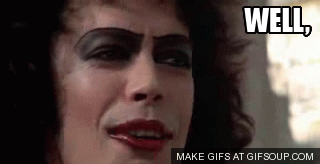- This post is part of a on-going series called “Being a Professional Manga Artist in the West“. The first post is here.
- Buy my short story collection from Bento Comic’s Smashwords storefront @ US$4.99.
Part 4: Working as a Manga-Style Comics Illustrator
After I finished book 2 of ‘The Dreaming’ in 2006, I was contacted by Dallas Middaugh of Randomhouse imprint Del Rey to work as an illustrator for one of Dean Koontz’s series. I jumped at the opportunity – Dean was one of the writers I used to read as a teenager, and I was psyched to hear that he was interested in turning his best-selling work ‘Odd Thomas’ into a manga series.
Dean was a best-selling author and a canny businessman, and he was interested in tapping into a younger market. The goal was to create a manga-version of ‘Odd Thomas,’ his psychic fry cook who can see dead people, since manga had now matured into a known category in bookstores. This was around 2007, manga was perceived as catering to a younger audience, and publishing houses everywhere had tagged it as a ‘youth market.’ Unfortunately, that also meant that more mature manga had a hard time selling in the US.
Part 4a: Manga was Either Being Pirated, Or Considered to be for Kids
When publishers saw that youth-oriented manga was selling, they just put more of that into the market and reduced the number of mature titles.
This had a stack-on effect. Few adult readers got into manga because they perceived it as something for children, while children were increasingly turning to the Internet to get their fix of free, pirated manga. 2008 marked a turning point for the publishing industry in general, but especially for manga – it was (a) the year of the Global Financial Crisis, and (b) the year manga aggregators such as OneManga.com truly took off.

Now, fan-translated manga – called ‘scanslations’ – have been in existence for a while. These used to be small groups of fans, who scanned and translated Japanese volume manga in their own time. They then shared it on the Internet with other fans via IRC or other online servers – a pure expression of their love for the manga (even though it was 100% a violation of the creator’s copyright). Anyway, I remember variations of this having been around as early as 1998, and it was a surprisingly big community. Early scanslations helped build the popularity of manga in the west, and in those days, established publishers even surfed scanslation sites, to help them choose which manga to translate and bring over.
By 2007, however, things had taken a darker turn. Along came manga “super-sites” like OneManga and other sites like it, which amassed all the fan-translated manga they could find and placed it into one big centralised website. This was often done without the permission of the translators, which meant that the pirates got pirated. This made things too easy, and too accessible. Soon, when people realised they could read all the manga they wanted online without paying a cent, they began to stop buying manga.
These two things, rampant piracy and the GFC, combined to cause a catastrophic fall in manga as a publishing category. The glut of publishing also didn’t help. Due to the manga boom, various publishers have also flooded the market with inferior titles, and this just made things worse. In 2013, bookstores sold less copies of manga than they did in 2003, and the numbers still continue to fall.

Sales in the “Manga” section of Bookscan, which covers 60-70% of US book sales. These figures were taken from “Tilting at Windmills” by Brian Hibbs at ComicBookResources.com.
When I first started working for Dean, it was in 2007, a year before the GFC. What happened after resembled a downward spiral, not just for me, but for the publishing industry as a whole. Two things also happened in 2010 that made me change directions, which I will talk about later.
*****
Next Monday, I’ll be back to talk about my work as an illustrator first. After that, I’ll go into what happened in 2010.


